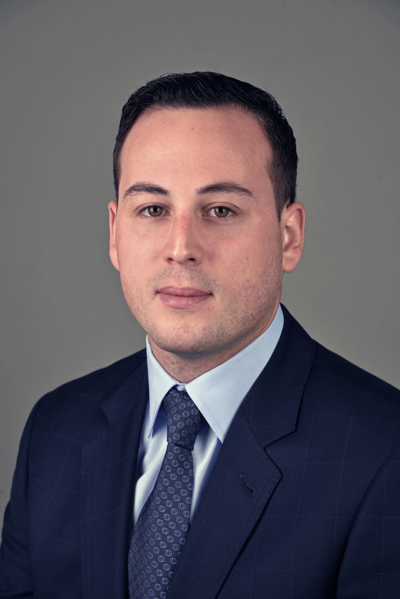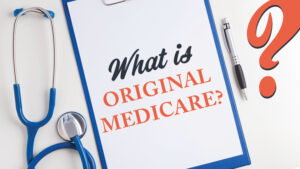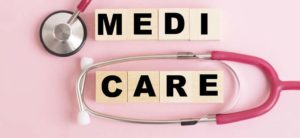Why New York is One of the Best States for Medicare Beneficiaries

When it comes to Medicare, not all states provide the same level of flexibility and benefits. New York stands out as one of the most consumer-friendly states, offering unique advantages that give beneficiaries more control over their healthcare. Unlike most states, New York follows a “guaranteed issue” policy, meaning Medicare Supplement (Medigap) plans are available to all eligible individuals without medical underwriting. This ensures that residents can switch plans at any time without worrying about being denied coverage due to pre-existing conditions.
Additionally, New York has some of the most generous financial assistance programs, such as the Elderly Pharmaceutical Insurance Coverage (EPIC) program, which helps seniors save significantly on prescription drug costs. Combined with high-income limits for Medicare Savings Programs, these benefits make New York an ideal state for Medicare beneficiaries seeking comprehensive coverage with minimal financial burden.
Understanding Medicare Basics
Medicare is a federal health insurance program primarily for individuals turning 65, as well as those under 65 who qualify due to Social Security Disability Insurance (SSDI). While there are additional circumstances for eligibility, these are the most common.
Medicare is divided into several parts:
- Part A covers hospital-related services, including inpatient hospital stays, skilled nursing facilities, hospice, and some home health care.
- Part B covers doctor visits, outpatient medical care, preventive services, and some home health care.
- Part C (Medicare Advantage) is an alternative to Original Medicare (Parts A and B) and is offered through private insurance companies.
- Part D provides prescription drug coverage and is administered by private insurers approved by Medicare.
For those receiving Medicaid before becoming eligible for Medicare, automatic enrollment in a benchmark Medicare Part D prescription drug plan ensures continued drug coverage. However, failing to enroll in Medicare Part D when first eligible can result in a lifelong late enrollment penalty. This penalty increases the longer an individual goes without coverage and remains in effect for as long as they have Part D coverage.
One of the most common misconceptions about Medicare is that it is free. While Medicare Part A is premium-free for individuals who have worked and paid Medicare taxes for at least 40 quarters (10 years), Medicare Part B requires a monthly premium. In 2025, the standard Medicare Part B premium is $185 per month. However, individuals with higher incomes pay more due to the Income-Related Monthly Adjustment Amount (IRMAA). For example:
- Individuals earning under $106,000 in 2023 will pay the standard $185 per month in 2025.
- Individuals earning over $500,000 in 2023 will pay $628.90 per month for Part B, plus an extra $85.80 per month for their Part D premium.
Understanding these costs and potential penalties helps beneficiaries make informed choices about their Medicare coverage.
New York’s No Medical Underwriting Rule: A Game-Changer
In most states, medical underwriting is required to enroll in a Medigap plan outside of the initial enrollment period. This means that individuals must pass a health evaluation, and those with certain medical conditions may be denied coverage or charged higher premiums. In contrast, New York prohibits medical underwriting, ensuring that all Medicare beneficiaries can enroll in a Medigap plan at any time without restrictions based on health status.
This flexibility allows New York Medicare beneficiaries to make coverage changes as their health needs evolve. Many beneficiaries initially enroll in Medicare Advantage plans when they are relatively healthy and later switch to Medigap plans when they require more comprehensive coverage. Since Medigap plans offer greater freedom in choosing healthcare providers and eliminate out-of-pocket costs for Medicare-covered services, this is a valuable option for many seniors.
While the no underwriting rule is beneficial for consumers, it has led some insurers to raise premiums or withdraw from the market altogether. Despite this, New Yorkers still enjoy more coverage options and greater security than Medicare beneficiaries in most other states.
Medicare Savings Programs in New York
New York has some of the most lenient income limits for Medicare Savings Programs (MSPs), making financial assistance accessible to more residents. In 2023, the state expanded income eligibility, increasing the number of beneficiaries who qualify for assistance by approximately 300,000 individuals.
Two main Medicare Savings Programs in New York include:
- Qualified Individual (QI): Income limit of $2,426 (single) or $3,279 (couple)
- Qualified Medicare Beneficiary (QMB): Income limit of $1,800 (single) or $2,433 (couple)
Unlike many states, New York does not impose asset limits for MSP eligibility, focusing solely on income. Key benefits of the program include:
- Coverage of Medicare Part B premiums, saving beneficiaries $2,220 annually.
- Automatic qualification for Medicare Part D’s Extra Help program, reducing prescription drug costs.
- Elimination of Part B late enrollment penalties.
- Coverage of Medicare Part A premiums for those without enough work history to qualify for premium-free Part A.
The Elderly Pharmaceutical Insurance Coverage (EPIC) Program
EPIC is a New York-specific prescription assistance program designed to help seniors with Medicare Part D costs. It is available to individuals aged 65 and older and provides financial relief for prescription drug expenses. New York has some of the highest income limits for State Pharmaceutical Assistance Programs (SPAPs), making EPIC one of the most accessible programs in the country.
EPIC participants benefit from additional cost savings and gain an extra opportunity each year to switch their Medicare Advantage or Part D plan, an option not available in most other states.
Inflation Reduction Act: What’s Changing in 2025
One of the most significant Medicare reforms in recent years is the Inflation Reduction Act, which introduces new cost-saving measures:
- In 2024: The catastrophic phase of Medicare Part D was eliminated, meaning beneficiaries no longer have to pay out-of-pocket once they reach this phase.
- In 2025: A $2,000 annual cap on out-of-pocket prescription drug costs takes effect, providing major savings for individuals with high medication expenses.
While these changes benefit many Medicare beneficiaries, they have also resulted in increased premiums for Part D plans as insurers adjust to new cost structures. This has led some beneficiaries to question why they are required to enroll in Part D when they take few or no medications.
Conclusion: Why New York is a Medicare-Friendly State
New York’s consumer-friendly Medicare policies, including its no medical underwriting rule, generous financial assistance programs, and the EPIC prescription drug savings plan, make it one of the best states for Medicare beneficiaries. These policies provide unparalleled flexibility and cost-saving opportunities, ensuring that seniors have access to comprehensive healthcare coverage without excessive financial strain.
With Medicare’s complexity often overwhelming for beneficiaries, having access to clear and reliable guidance can make a significant difference in helping individuals maximize their benefits.
Call to speak to a licensed agent in New York today to discuss your unique situation or book here. 516-900-7877.






